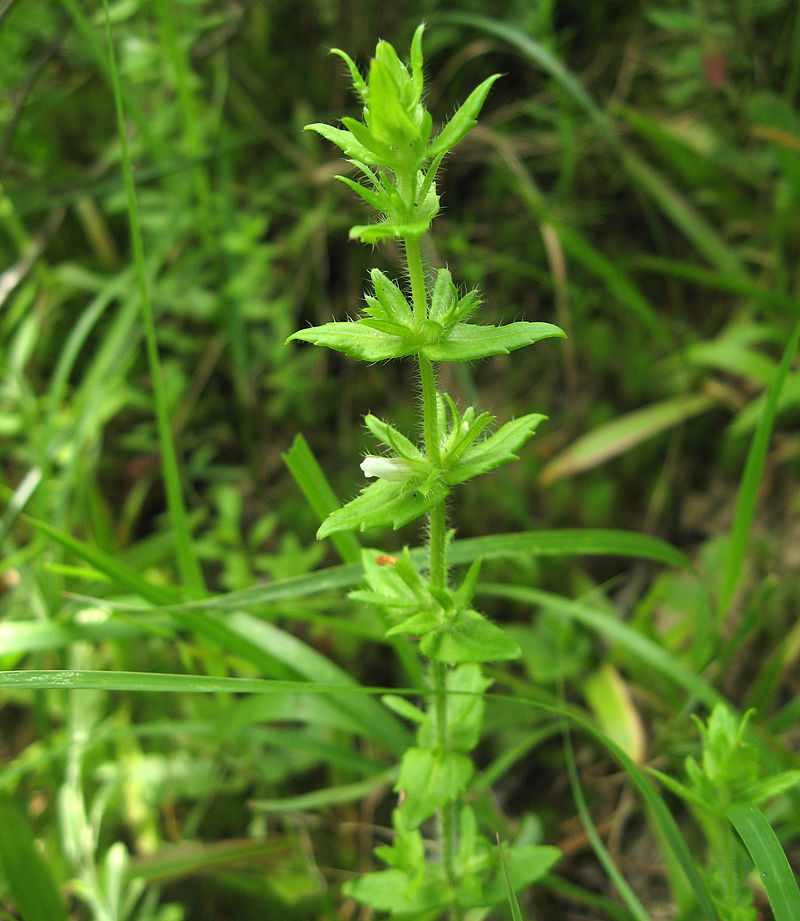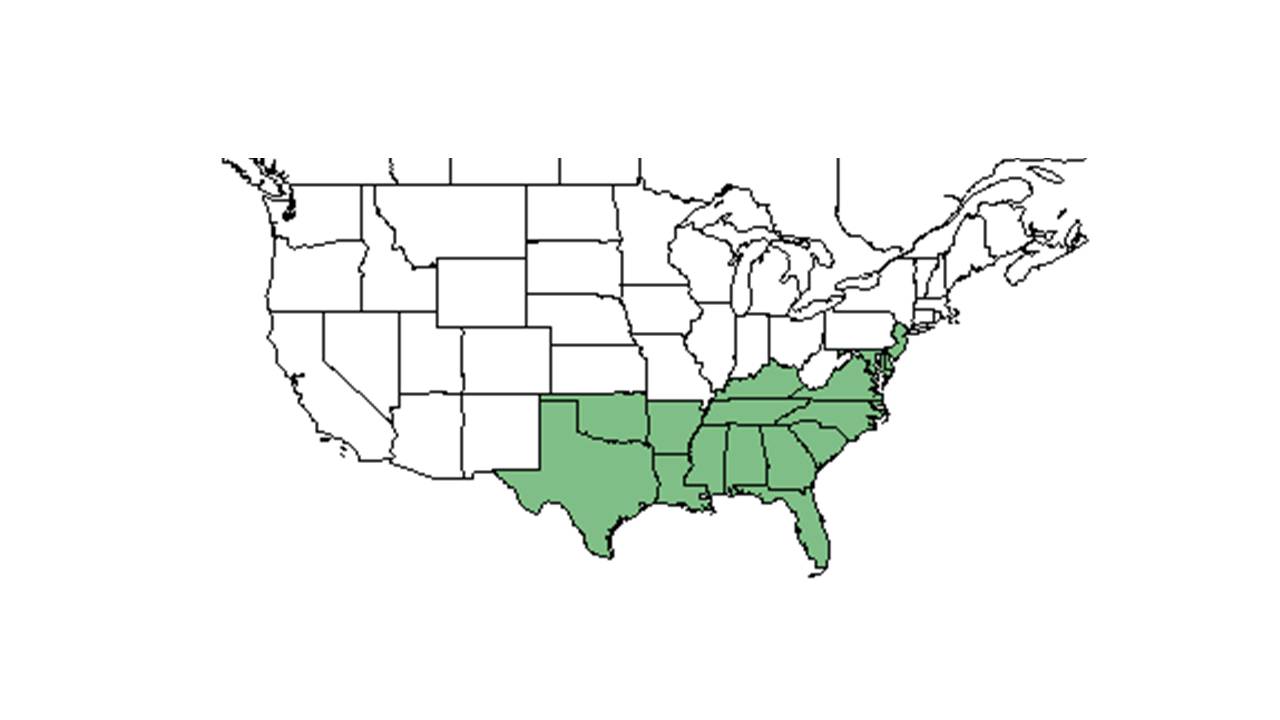Difference between revisions of "Sophronanthe pilosa"
| Line 29: | Line 29: | ||
===Habitat=== <!--Natural communities, human disturbed habitats, topography, hydrology, soils, light, fire regime requirements for removal of competition, etc.--> | ===Habitat=== <!--Natural communities, human disturbed habitats, topography, hydrology, soils, light, fire regime requirements for removal of competition, etc.--> | ||
| − | This species usually grows in wet areas near the borders of swamps, bogs, ponds, and within floodplains (FSU Herbarium). ''S. pilosa'' has also been spotted in open scrub, moist pine barrens, pine flatwoods, live oak hammocks, and turkey oak-longleaf pine-blackjack oak woods (FSU Herbarium). It has been observed to grow in drying and moist loamy sands, sandy peat, and wet peat (FSU Herbarium). This species also occurs in human disturbed areas such as trails, planted slash pine woods near powerline corridors, roadsides, old pastures, swamp clearings, bog clearings, woodland clearings, flatwood clearings, disturbed cypress domes, and ditches (FSU Herbarium). | + | This species usually grows in wet areas near the borders of swamps, bogs, ponds, and within floodplains (FSU Herbarium). ''S. pilosa'' has also been spotted in open scrub, moist pine barrens, pine flatwoods, live oak hammocks, and turkey oak-longleaf pine-blackjack oak woods (FSU Herbarium). It has been observed to grow in drying and moist loamy sands, sandy peat, and wet peat (FSU Herbarium). This species also occurs in human disturbed areas such as trails, planted slash pine woods near powerline corridors, roadsides, old pastures, swamp clearings, bog clearings, woodland clearings, flatwood clearings, disturbed cypress domes, and ditches (FSU Herbarium). Associated species includes ''Pinus, Hypericum, Magnolia, Nyssa, Pinchkneya, Liquidambar, Quercus virginiana, Justicia, Calopogon, Habernaria, Eriocaulon, Carex, Quercus falcata, Pinus palustris, Pinus elliottii, Quercus nigra, Gordonia lasianthus, Cyrilla, Magnolia virginiana,'' and ''Quercus marilandica'' (FSU Herbarium). |
===Phenology=== <!--Timing off flowering, fruiting, seed dispersal, and environmental triggers. Cite PanFlora website if appropriate: http://www.gilnelson.com/PanFlora/ --> | ===Phenology=== <!--Timing off flowering, fruiting, seed dispersal, and environmental triggers. Cite PanFlora website if appropriate: http://www.gilnelson.com/PanFlora/ --> | ||
Revision as of 18:21, 14 December 2015
| Sophronanthe pilosa | |
|---|---|

| |
| Photo by Mason Brock | |
| Scientific classification | |
| Kingdom: | Plantae |
| Division: | Magnoliophyta - Flowering plants |
| Class: | Magnoliopsida – Dicotyledons |
| Order: | Scrophulariales |
| Family: | Plantaginaceae |
| Genus: | Sophronanthe |
| Species: | S. pilosa |
| Binomial name | |
| Sophronanthe pilosa Michx. | |

| |
| Natural range of Sophronanthe pilosa from USDA NRCS Plants Database. | |
Common name: shaggy hedgehyssop
Synonym: Gratiola pilosa
Contents
Taxonomic notes
Description
Distribution
Ecology
Habitat
This species usually grows in wet areas near the borders of swamps, bogs, ponds, and within floodplains (FSU Herbarium). S. pilosa has also been spotted in open scrub, moist pine barrens, pine flatwoods, live oak hammocks, and turkey oak-longleaf pine-blackjack oak woods (FSU Herbarium). It has been observed to grow in drying and moist loamy sands, sandy peat, and wet peat (FSU Herbarium). This species also occurs in human disturbed areas such as trails, planted slash pine woods near powerline corridors, roadsides, old pastures, swamp clearings, bog clearings, woodland clearings, flatwood clearings, disturbed cypress domes, and ditches (FSU Herbarium). Associated species includes Pinus, Hypericum, Magnolia, Nyssa, Pinchkneya, Liquidambar, Quercus virginiana, Justicia, Calopogon, Habernaria, Eriocaulon, Carex, Quercus falcata, Pinus palustris, Pinus elliottii, Quercus nigra, Gordonia lasianthus, Cyrilla, Magnolia virginiana, and Quercus marilandica (FSU Herbarium).
Phenology
This plant has been observed flowering from May through August and fruiting from June through November (FSU Herbarium).
Seed dispersal
Seed bank and germination
Fire ecology
Has been found to occur in annually burned boggy draws in pinelands (FSU Herbarium).
Pollination
Use by animals
Diseases and parasites
Conservation and Management
Cultivation and restoration
Photo Gallery
References and notes
Florida State University Robert K. Godfrey Herbarium database. URL: http://herbarium.bio.fsu.edu. Last accessed: June 2014. Collectors: Loran C. Anderson, A. H. Curtiss, Robert K. Godfrey, Grady W. Reinert, O. Lakela, J. N. Triplett, Jr., C. Jackson, Robert Kral, Mabel Kral, Grady W. Reinert, Robert L. Lazor, A. G. Shuey, R. A. Norris, and R. F. Doren. States and Counties: Florida: Bay, Clay, De Soto, Dixie, Duval, Franklin, Gadsden, Gulf, Hamilton, Hernando, Hillsborough, Jackson, Leon, Levy, Liberty, Madison, Marion, Nassau, Orange, Osceola, Okaloosa, Polk, Putnam, Santa Rosa, Taylor, and Wakulla. Georgia: Thomas.